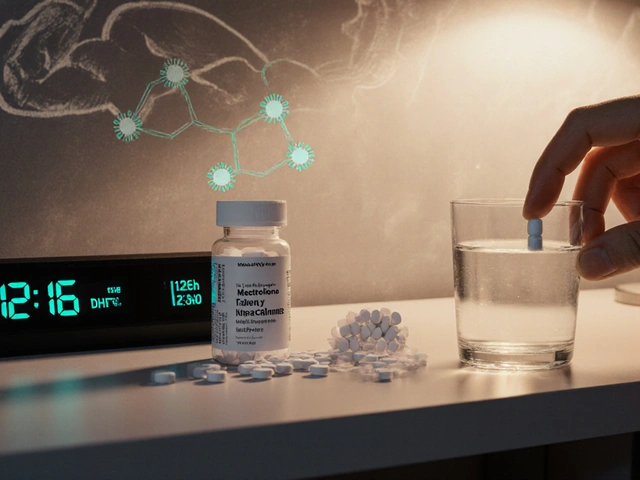Nausea Relief: Quick Tips & When to Seek Help
Feeling queasy can ruin a day, but you don’t have to just ride it out. On this page we’ll show you practical steps you can take right now, point out safe over‑the‑counter options, and explain the red flags that mean it’s time to call a professional.
Everyday Ways to Calm Your Stomach
Most nausea starts with something you ate, a sudden dip in blood sugar, or motion. Try sitting up straight, breathing slowly, and avoiding strong smells. A calm environment helps your gut settle faster than lying flat.
Hydration is key. Sip cool water, clear broth, or an oral rehydration drink in small sips every few minutes. Avoid gulping large amounts, which can make the stomach feel fuller and worsen the feeling.
When it comes to food, stick to bland, easy‑to‑digest items. Crackers, toast, plain rice, or bananas are gentle on the stomach. Eat a few bites every half hour rather than a big meal all at once.
Ginger and peppermint are natural anti‑nausea agents. A ginger chew, ginger tea, or a few drops of peppermint oil on a cotton ball can soothe the lining of the stomach. Use them before meals if you know what triggers your nausea.
Medications and When to See a Doctor
If home tricks don’t help within an hour, an over‑the‑counter anti‑emetic like meclizine or dimenhydrinate can be effective. Follow the package dosage and avoid mixing with alcohol or sedatives.
Watch for warning signs: persistent vomiting, dehydration, blood in vomit, fever, or pain that won’t go away. These symptoms mean you should contact a healthcare provider right away.
Our tag page also includes articles on specific medications that can cause nausea, such as certain pain relievers, antibiotics, and hormonal treatments. Reading those posts can help you understand if a prescription you’re taking might be the culprit.
Whether you’re dealing with occasional motion sickness or a side effect from a new drug, the tips above give you a solid starting point. Feel free to explore the related posts for deeper dives into specific meds and safer buying guides.
Got more questions? Keep scrolling, read the linked articles, and take control of your nausea before it takes control of you.
If you're seeking alternatives to Motilium in 2024, this article explores five potential options, evaluating both their effectiveness and potential downsides. From established drugs like Metoclopramide and Zofran to innovative treatments such as Relamorelin, Botox injections, and Nabilone, each alternative serves the purpose of handling nausea and related symptoms in unique ways. The article delves into the pros and cons of each to help readers make informed decisions on managing their gastroparesis and digestive health. Stay informed on the latest treatments for enhanced care options.
Categories
Archives
Recent-posts
Intra-Articular Steroid Injections: What You Need to Know About Systemic Side Effects and Limits
Dec, 16 2025



 Medications
Medications




